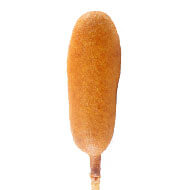National Joe Day
 Today is National Joe Day. We have been unable to track down the source of this unofficial observance but that shouldn’t keep you from having fun with it.
Today is National Joe Day. We have been unable to track down the source of this unofficial observance but that shouldn’t keep you from having fun with it.
Is your name Joe? Congratulations. Inform your friends, family and coworkers about today’s holiday, then sit back and wait for the accolades to come your way. If not, you could become “Joe for a Day.”
Did you know that Joe (or Jo) means “sweetheart” in the Scottish language? In Hebrew, Joe roughly translates to “he will increase.” According to etymology site Behind the Name, Joe ranked #20 in 1880, the first year it reports statistics. It has since dropped in popularity, coming in at #565 in 2014.
Here’s a fun National Joe Day game based on 20 Questions. Have everyone pick Joe nametags from a basket and—without looking—stick them to their foreheads so everyone else can see the name. A player must then ask the others questions to figure out which Joe he or she is wearing. The person who guesses correctly after the fewest questions is a cheater. (The law of averages dictates that there’s one in every group.)
The game continues until one last straggler is still desperately trying to figure it out. At this point, someone whispers, writes a note or otherwise helps the person finish. (This is known as mercy cheating.) Finally, everybody wins the same prize just for participating: a cup of coffee, a jelly bean or something else insignificant yet sure to gratify the losers and ignore the efforts of the winners. (We’re still talking about “average,” right?)
Here are some suggestions for nametags:
- Joe Six-Pack
- G.I Joe
- Joe Blow
- Joe Cool
- Joe Palooka
- Joe Schmoe
- Holy Joe
If you’ve got a large group, you could add some real-life Joes:
- Joe Namath
- Joe DiMaggio
- Joe Montana
- Joe Guidice
- Joe Stalin
- Joe Biden
- Joe Frazier
Extra credit for Stephen King fans:
- Joe King (and no, we’re not joking)
Have a happy National Joe Day!
![]()




